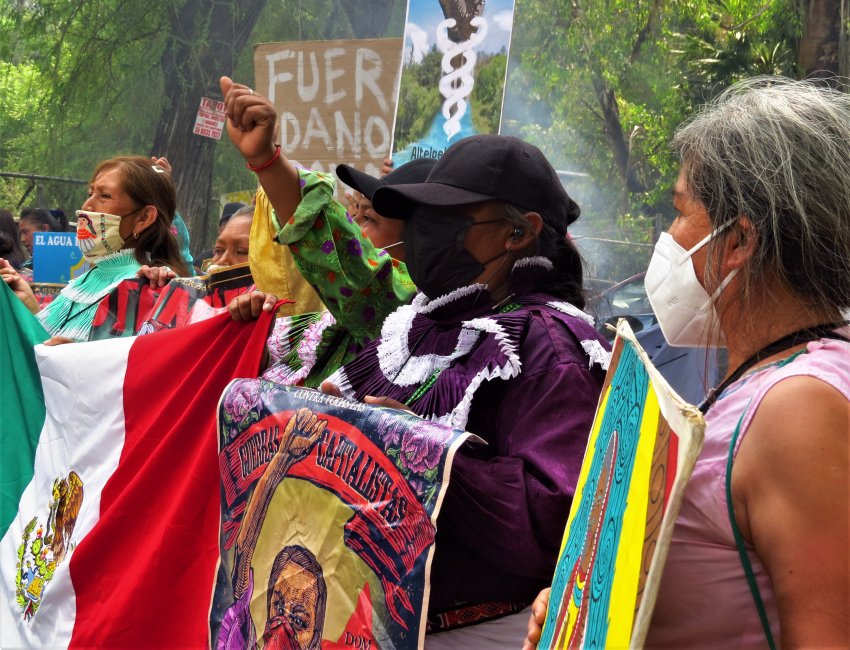
Indigenous groups, including Nahuas and Otomis, as well as Mexicans, have spent the past month travelling in a convoy to nine different states of the country. Each day they visited multiple towns and regions where mostly European and United States corporations are plundering water and resources.
343 - The convoy marches past a Bonafont water bottling plant in Puebla state cr Tamara Pearson.jpg
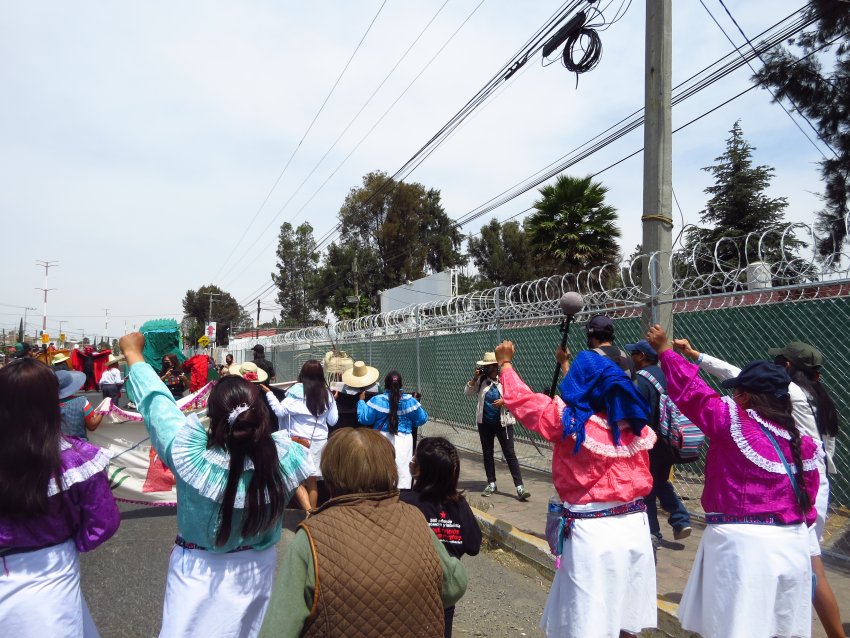
About 80% of Mexico is currently experiencing severe drought, and agriculture and food supplies are suffering. But while the dry season is a natural phenomenon, the convoy members argue that mining, excessive use of water, pollution, and culling of forests by corporations is what is causing the water shortages, food problems and climate change.
343 - Boy chants using plastic water bottle cr Tamara Pearson.jpg

Indigenous, rural, and poor people are disproportionately affected, as the mining and other companies operate on their land and in their communities. Called mega projects, these mines are accompanied by huge energy and road infrastructure, and extreme levels of water extraction and contamination.
343 - The convoy marches through Puebla city to protest outside the state parliament cr Tamara Pearson
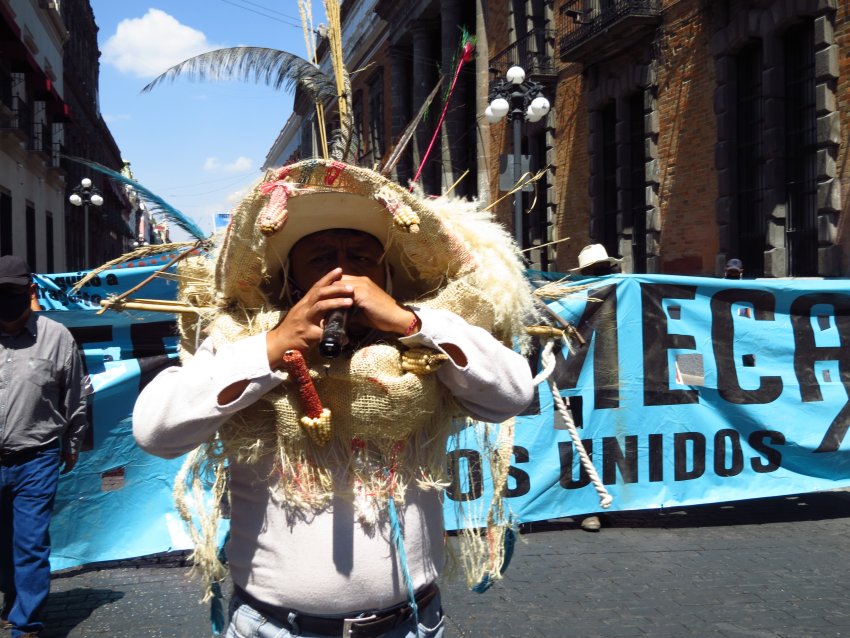
In the 16 years prior to the current government, only 12% of mega projects had a social purpose, while at least 70% were built purely for the benefit of industry and corporations. In Puebla state, where the convoy campaign began on March 22, 12.8% of the total land area is licensed to 349 mines, with a further 34 being processed.
343 - The convoy in Ahuacatlán, where locals have defeated a Walmart mega project cr Tamara Pearson.jpg
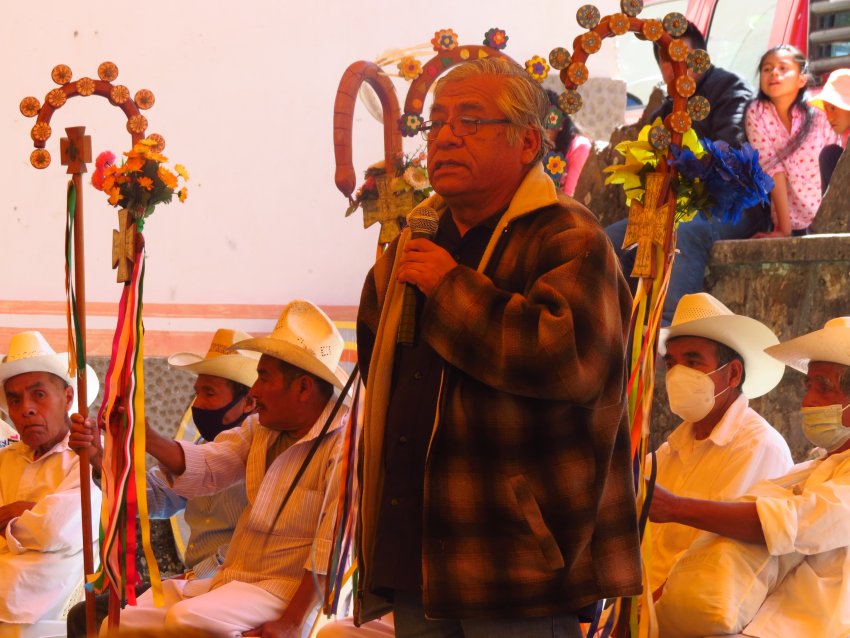
“The convoy is allowing us to unite. We’re sick of not being seen or heard. Of being humiliated,” said María de Jesús Patricio Martínez, or Marichuy as she is known, during the launch of the convoy. She is the first Indigenous woman to attempt to run for president and spokesperson for the National Indigenous Council (CNI).
343 - Marichuy (left), speaking at one of the public meetings held by the convoy in Mexico City cr Tamara Pearson
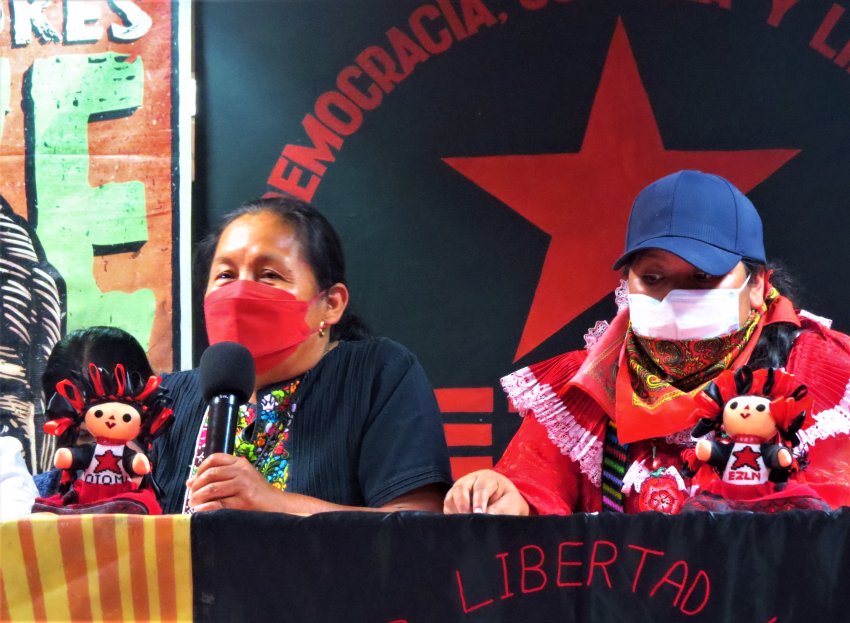
The convoy visited Xoxtla, Puebla, where European company Ternium is extracting millions of litres of water and contaminating the local water supply. Local Nahua people don’t have enough water for their small farms, the Prieto River has dried up, and large, long cracks are appearing in the land.
343 - The canals of Xochimilco cr Tamara Pearson
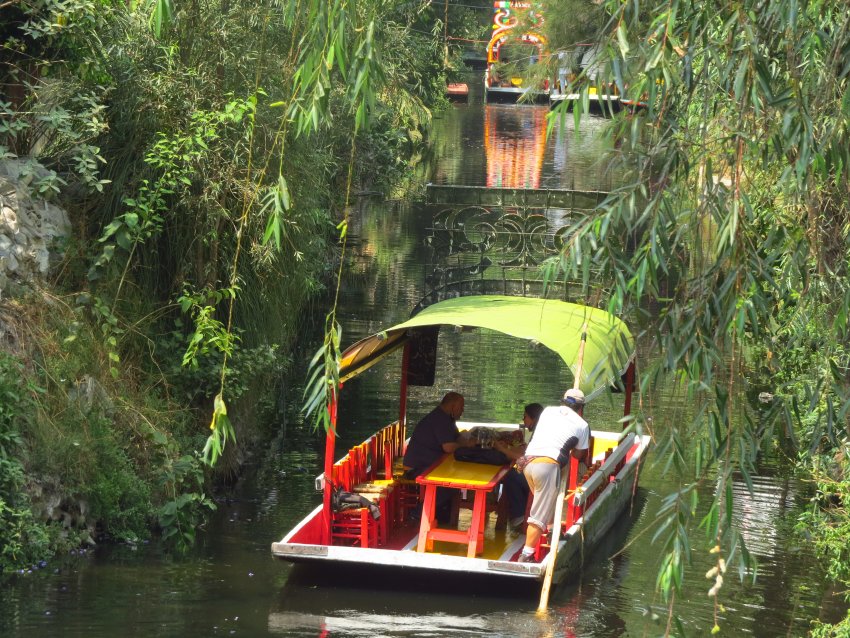
Xochimilco, birthplace of the axolotl and chinampa farming where tiny islands are built up on the lake, is also facing severe water issues. Its water is sent to Mexico City, for industrial, commercial and domestic use, and original peoples in the area don’t have enough for their small vegetable and flower farms. During the convoy visit there, Diego Lopez Segura told Green Left that money is looked after, while the waterways aren’t.
“Xochimilco used to be lovely, the rivers used to be crystal green, but now grey domestic and industrial water has turned it turbid,” he said.
343 - A symbolic planting ceremony was held between members of the convoy and original peoples in Xochimilco cr Tamara Pearson
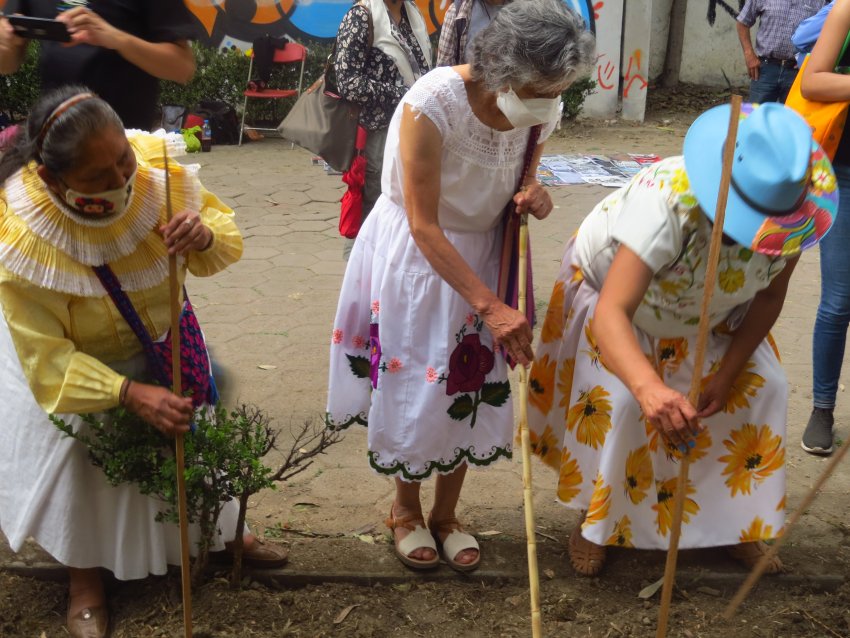
The convoy also visited toxic waste dumps, a private residential project forcing indigenous people to abandon their land, a gas pipeline in San Isidro Huilotepec, a “sacrifice zone” as locals in Actopán, Veracruz refer to the mines in their region, and met with NaSavi, Me´pháá, Nahua, Ñamnkué and Mexicans in Guerrero state. It also travelled to other sites and struggles in Mexico City, Tlaxcala state, Oaxaca state and more.
[Tamara Pearson is a journalist in Puebla, Mexico, and author of The Butterfly Prison. Her writings can be found at her blog. Twitter: @pajaritaroja.]